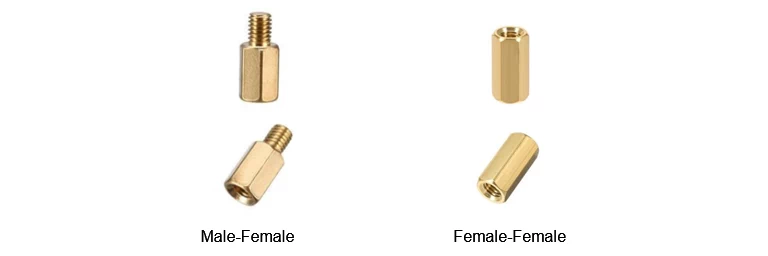
In the world of custom PC building, there exist tiny components that are crucial to the successful operation and longevity of the computer. Amongst these important parts are the motherboard standoffs, small yet essential elements that secure the motherboard firmly and maintain stability throughout the build. These standoffs serve to prevent possible damage to the computer system, ensuring that a sturdy foundation is in place for your high-performing device.
Motherboard standoffs essentially act as spacers, creating the necessary distance between the motherboard and the case, while also providing grounding points that minimize electrical interference within the system. Additionally, standoffs play an instrumental role in efficient heat dissipation for the PC components, further preserving the life and performance of your cherished hardware.
In this informative guide, we will delve into the critical function of motherboard standoffs, and their various types. We will also examine how they are installed correctly when embarking on your journey to build a secure and stable PC.
RELATED: Motherboard Components – A Guide To Building Your Own PC
What are motherboard standoffs?
Motherboard standoffs are essential components in a PC build, as they help to keep the motherboard isolated from the PC chassis. They are hexagonal in shape and usually composed of brass or another material type, allowing for secure installation and easy access when using a wrench.
Motherboard standoffs typically come in male-female threads forms. This design allows one end to be screwed into the PC chassis while the other end is used to firmly affix a motherboard in place. This allows them to be securely fastened into the respective mounting points on the case and motherboard.

Why Are Motherboard Standoffs Essential?
The purpose of using motherboard standoffs is to prevent any electrical short circuits that could occur due to direct contact between the two surfaces. Additionally, when motherboard standoffs are made of brass or other metal material, they act as grounding points between the motherboard and the PC case.
Standoffs not only give the motherboard stability, but they also serve as spacers that elevate the board away from the case. This helps ensure that no components on either side of the board are shorting out due to contact with other components or exposed parts of the case.
By employing standoffs in the space between the motherboard and the PC case, air can effortlessly flow through it. This helps cool down your PC by providing proper airflow, which ultimately extends its lifespan and increases its performance.
What Types of Motherboard Standoffs Are Available?
There are various types of motherboard standoffs available on the market with different materials, standard sizes, and forms.
The most common materials used for standoffs are brass, but some types are made of steel or plastic. Each material offers different features, such as corrosion resistance, strength, and durability.

When it comes to thread size, the motherboard standoffs on the market tend to either adhere to Unified Thread Standard (UTS), commonly used in North America and is denoted at #6-32, or ISO Metric Screw Thread Standard indicated by M3. It is important to note here that you cannot use these two standard thread types together due to the difference in thread parameters.

Ultimately, when it comes to the forms of motherboard standoffs, there are two types: male-female threads and female-female threads. Male-female threads tend to be preferred as they offer simpler usability than female-female ones.

Do Motherboard Standoffs Come With Your PC Case?
When you purchase a new PC case, it is essential to know if the necessary components, like motherboard standoffs, are included.
So, do motherboard standoffs come with your PC case? The answer is yes; the PC case will usually include a pack of standoffs and their accompanying screws. They are designed to work effortlessly with the predrilled holes found in the case, ensuring easy installation.
It’s important to note that the included standoffs typically adhere to the same standard thread size as the predrilled holes in the PC case. This guarantees compatibility and makes the installation process straightforward. Some PC cases even offer the convenience of pre-installed (or built-in) motherboard standoffs, saving time and effort during the assembly process.
However, it is wise not to assume every PC case includes motherboard standoffs by default. It’s always good to double-check the product specifications before purchase. This will help you avoid any unpleasant surprises when it comes time to put your PC together.
As long as you are purchasing a reputable PC case, it should come with the required standoffs. Before you start assembling your new PC, make sure to check for the included standoffs and use them carefully during the installation process.
How to install motherboard standoffs correctly?
Installing motherboard standoffs correctly is essential for ensuring a safe and secure fit for your motherboard. As such, here are some tips on how to properly install them.
Check your motherboard and PC case
Before installing motherboard standoffs, it is crucial to examine both the motherboard and the PC case thoroughly. Start by verifying that the motherboard form factor corresponds with your PC case to ensure compatibility. Examine the holes on the motherboard and the pre-drilled holes in the case for alignment. Furthermore, inspect the case for any debris or sharp edges that could potentially damage the motherboard.
Double-check that the I/O shield is correctly installed and aligned with the motherboard’s I/O ports. Finally, gather an appropriate number of standoffs and corresponding screws for securing the motherboard to the case. If in doubt, check your PC case manual or contact the manufacturer.
Install the motherboard standoffs
To install motherboard standoffs successfully, begin by gathering the necessary tools and components, which include the motherboard, case, standoff screws, a screwdriver, and the manual for your specific motherboard.
First, identify the type of standoffs your case has, as they can be metal, plastic, or built-in. Metal standoffs are the most common and can be unscrewed and moved, whereas built-in standoffs are integrated into the case and cannot be moved.
Next, locate the pre-drilled holes in the case where the standoffs should be installed. These holes will correspond to the mounting holes on your motherboard. It is crucial to ensure the correct alignment of holes between the case and the motherboard, as using the wrong hole can result in damage to the components on the motherboard.
Now, refer to your motherboard manual to identify the proper placement of standoffs for the specific form factor (e.g., ATX, Micro-ATX, or Mini-ITX). This will help prevent any confusion and save time when aligning the components.
Once you have determined the proper placement, screw the standoff screws into the appropriate holes in the case. Be careful not to overtighten the screws, as this can cause stress on the motherboard and case. Instead, aim to achieve a snug fit that firmly secures the standoffs in place.
Place and mount the motherboard
After placing the standoffs in the correct positions, double-check the alignment by positioning the motherboard on top of the standoffs while ensuring that the I/O ports on the motherboard align with the corresponding cutouts in the I/O shield. You can gently push the motherboard against the shield for a flush fit.
Finally, with the motherboard resting atop the standoffs and in perfect alignment with the case and I/O shield, secure it in place by screwing it down to the standoffs using the provided screws. Remember not to overtighten the screws, as this can damage components on the motherboard. Instead, aim for a firm, secure fit that prevents movement and ensures proper contact with the standoffs.
Final check
After installing the motherboard standoffs, it is important to do a final check to ensure that everything is secured properly. Start by making sure that all screws have been tightened firmly and that none of them are loose. Check for any bent pins or other damage caused by overtightening screws.
When installing a new motherboard into a PC, it is recommended that you check each standoff for tightness before powering up the system. Loose standoffs can cause arcing or shorts due to contact with other metal parts, which can damage the components inside your computer.
Summary
In conclusion, motherboard standoffs serve as an essential component in ensuring a secure and stable PC build. Their primary function is to elevate the motherboard, preventing any electrical shorts and facilitating proper airflow within the covered area.
By carefully installing them correctly, you can significantly enhance the safety, durability, and performance of your custom-built computers. In essence, motherboard standoffs are small yet indispensable elements that contribute greatly to the success of any PC build.





